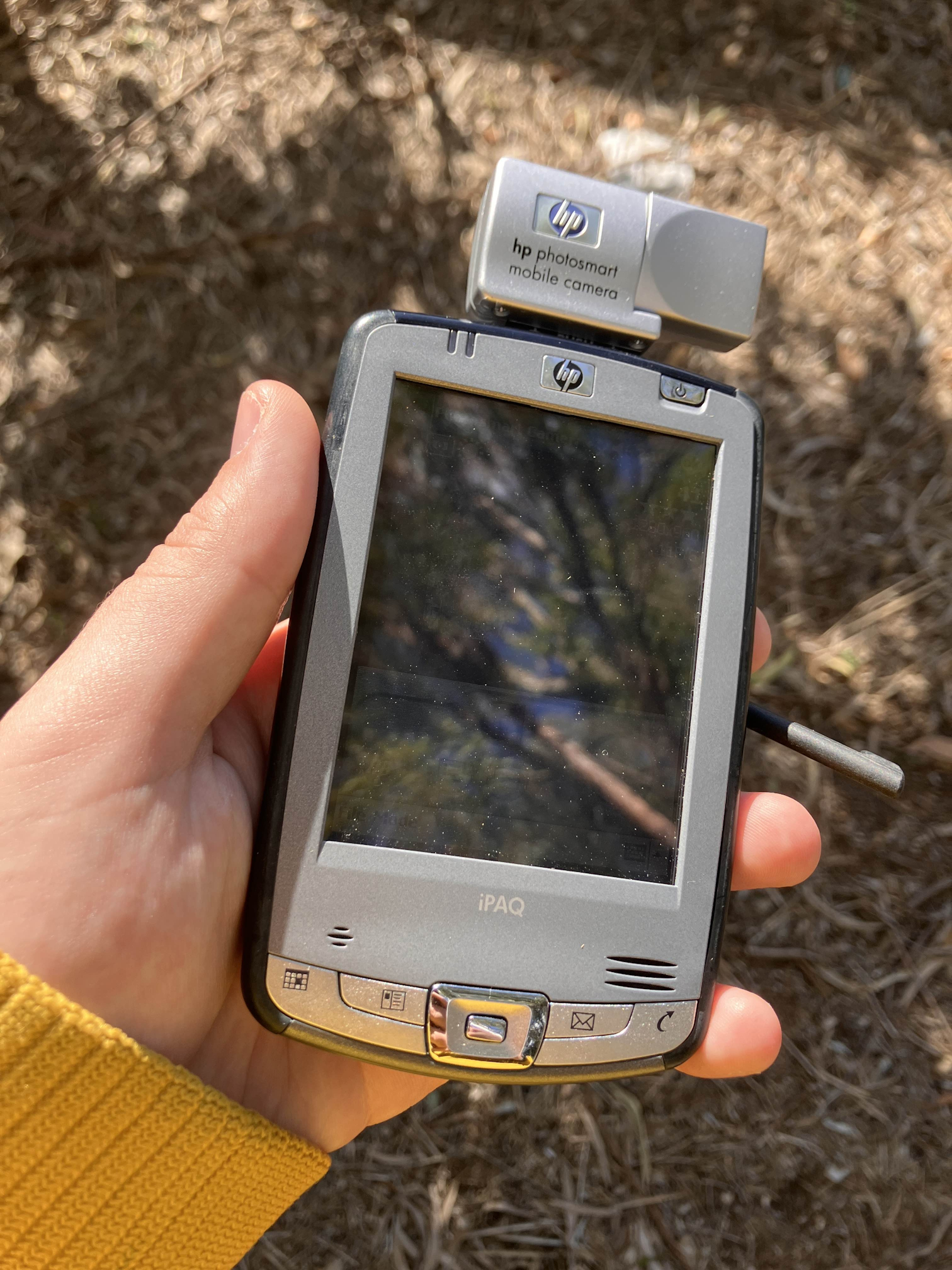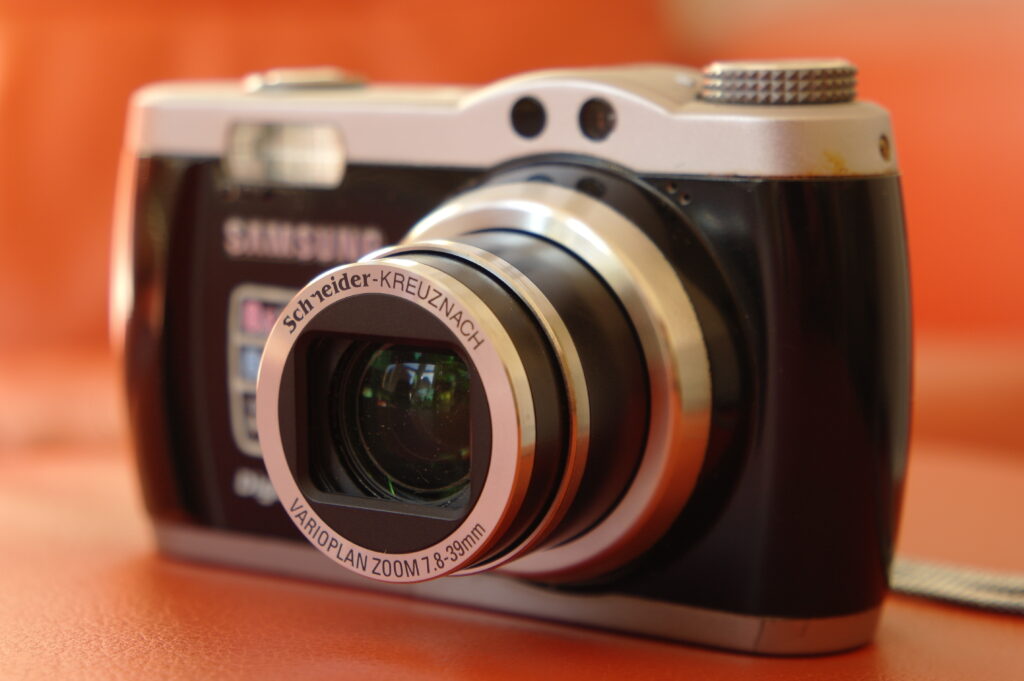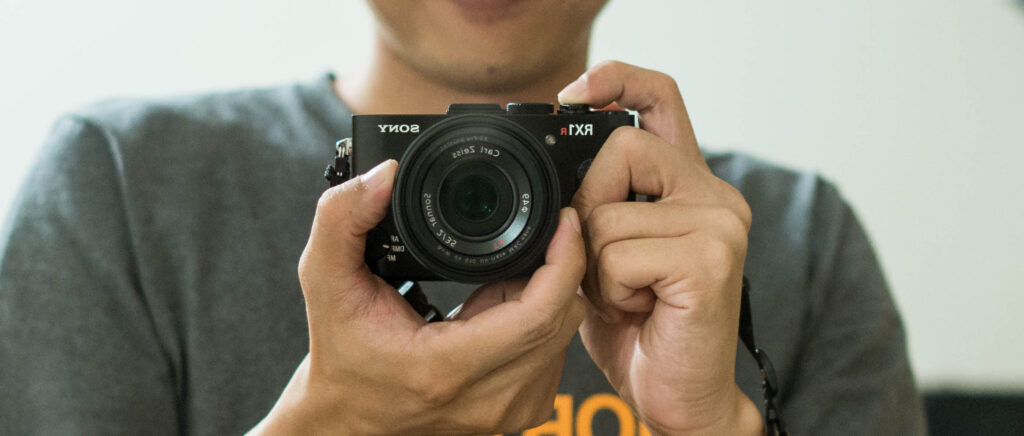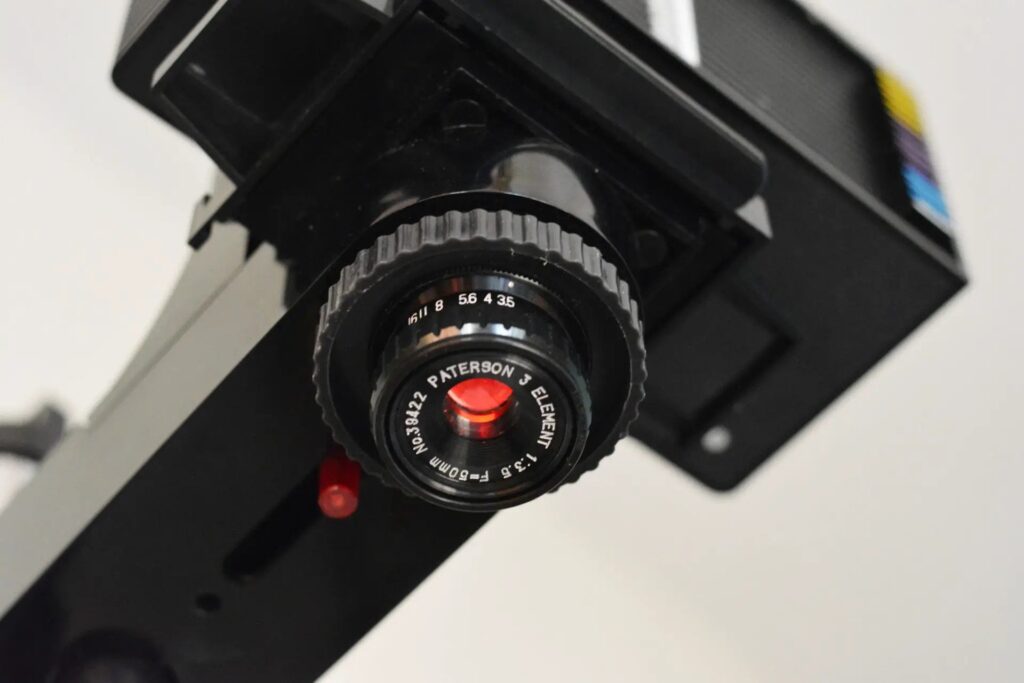In the age of smartphones, the idea of not having a camera in your pocket at all times may seem foreign. But even as far as twenty years ago, there were developments to try and make it happen.
See the PDA, the darling of science fiction, and a common tool of the Gen X and Boomer generation’s salary-men, being the progenitor of the smart phone. HP was making investments into the PDA space with the iPaq, as well as into the imaging space with their PhotoSmart cameras. Crossing these two areas, HP made the PhotoSmart Mobile Camera, connecting via the SD card slot on supported iPaq PDAs. Those unlucky enough to not have a dual-slot PDA would have to contend with the anemic internal RAM storage of the iPaq.
So, how does this strange camera feel to use? Well, perhaps bad is harsh word to use, but it’s the first thing that comes to mind when I think of the user experience. The first thing you will have to contend with, is the glossy, dim, 2003 LCD tech. The camera works best outdoors, in bright sunlight, which is exactly the most difficult environment to use the thing.

The live-view on the screen is letterboxed, and of a low frame rate. You can opt to make it fit the screen in the video settings, but this makes the frame rate so low, it becomes practically useless as a framing tool. So, stick with letterboxed, as much as it adds to the difficulty of use.
Short of some quality settings, and white balance presets, there is no concession to adjust your exposure. But unlike some cameras of the era, it actually does a good job of metering, relative to the competition.

As you can see from this photo, it tries to underexpose if there is a bright sky, which is preferable, but sometimes, it doesn’t, leading to strange artifacts.

Another huge problem, is the lack of autofocus. Yes, on the tiny sub-240p live-view, it expects you to manual focus. There are no focus aids, the best you will get is clicking the digital zoom button twice, trying your hardest to get things in focus, then zooming back out.

This normally wouldn’t be a problem, but the furthest setting towards infinity actually focuses past infinity, so you can’t simply set and forget, frustratingly.

If you can manage, the close focus results are very pleasing, but its easier said than done with that screen. Focus in general is just annoying, it seems best at 3-10 metres, not that a 1.3-megapixel sensor on a wide-angle lens was ever suited for infinity shooting.

It’s a frustrating, but unique experience, it’s probably something more fun for computer nerds, than camera nerds, but nonetheless, I hope you enjoyed the crunchy photos from my bushwalk.
Share this post:









Comments
Mark Ellerby on HP PhotoSmart Mobile Camera review – an SD card camera for Windows PDAs
Comment posted: 07/10/2025
Alastair Bell on HP PhotoSmart Mobile Camera review – an SD card camera for Windows PDAs
Comment posted: 07/10/2025
It's great to read such a refreshing reminder of the poor performance of the early days of digital photography.
Ed Gillam on HP PhotoSmart Mobile Camera review – an SD card camera for Windows PDAs
Comment posted: 07/10/2025
Ed
Gary Smith on HP PhotoSmart Mobile Camera review – an SD card camera for Windows PDAs
Comment posted: 07/10/2025
I suspect that I won't be keeping my eyes open for one.
Thanks for your post!
Comment posted: 07/10/2025
Lawrence Myers on HP PhotoSmart Mobile Camera review – an SD card camera for Windows PDAs
Comment posted: 08/10/2025
Honestly I’m impressed with the image quality of these samples in general; it doesn’t seem too far behind what you would expect from a consumer digital p&s camera of the time.
Awesome write up; I love weird old forgotten tech like this.
Jeffery Luhn on HP PhotoSmart Mobile Camera review – an SD card camera for Windows PDAs
Comment posted: 08/10/2025
Your PDA photo adventure made for an interesting read! It seems that people, including myself, will spend time using a camera that is like shooting pictures with our hands tied behind our backs...and wearing an eye patch. Why? I dunno.
A long time ago, on a planet called Earth, I worked for an Indonesian company that was trying to enter the PDA market with an improved model. It was easier to use than most of the models, and if we could have sourced the touch screens it might have had a successful, but short life. Sadly, touch screens were made in Japan and those producers did not want to sell to an outside competitor. Just as well, because there were no PDAs that really met the needs of users. The interface was clumsy and time consuming, taking forever to input the simplest of data. Forget the daily appointment planners. Those were a joke. Our model did have a decent B&W camera, which others did not. I was in the marketing department, so I didn't understand the engineering side, but this B&W camera was optimized for photographing documents and storing them in onboard files. The touch screen had a zoom feature that allowed the user to read the files and scroll around. Amazing. I didn't see that for years until the Apple phones came out.
Where have all the PDAs gone? Too bad they couldn't be ground up and used for something useful, like mulch.
Comment posted: 08/10/2025